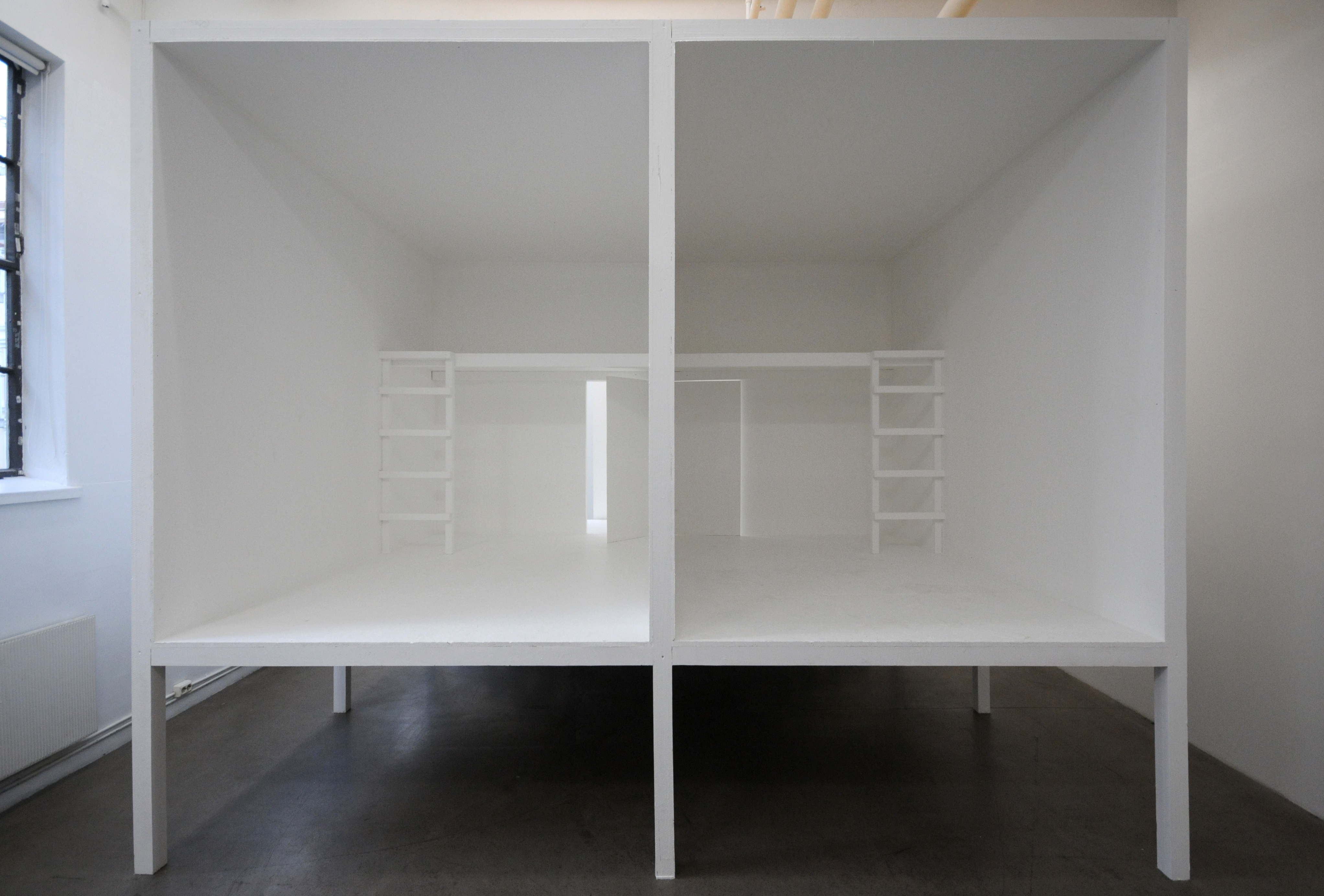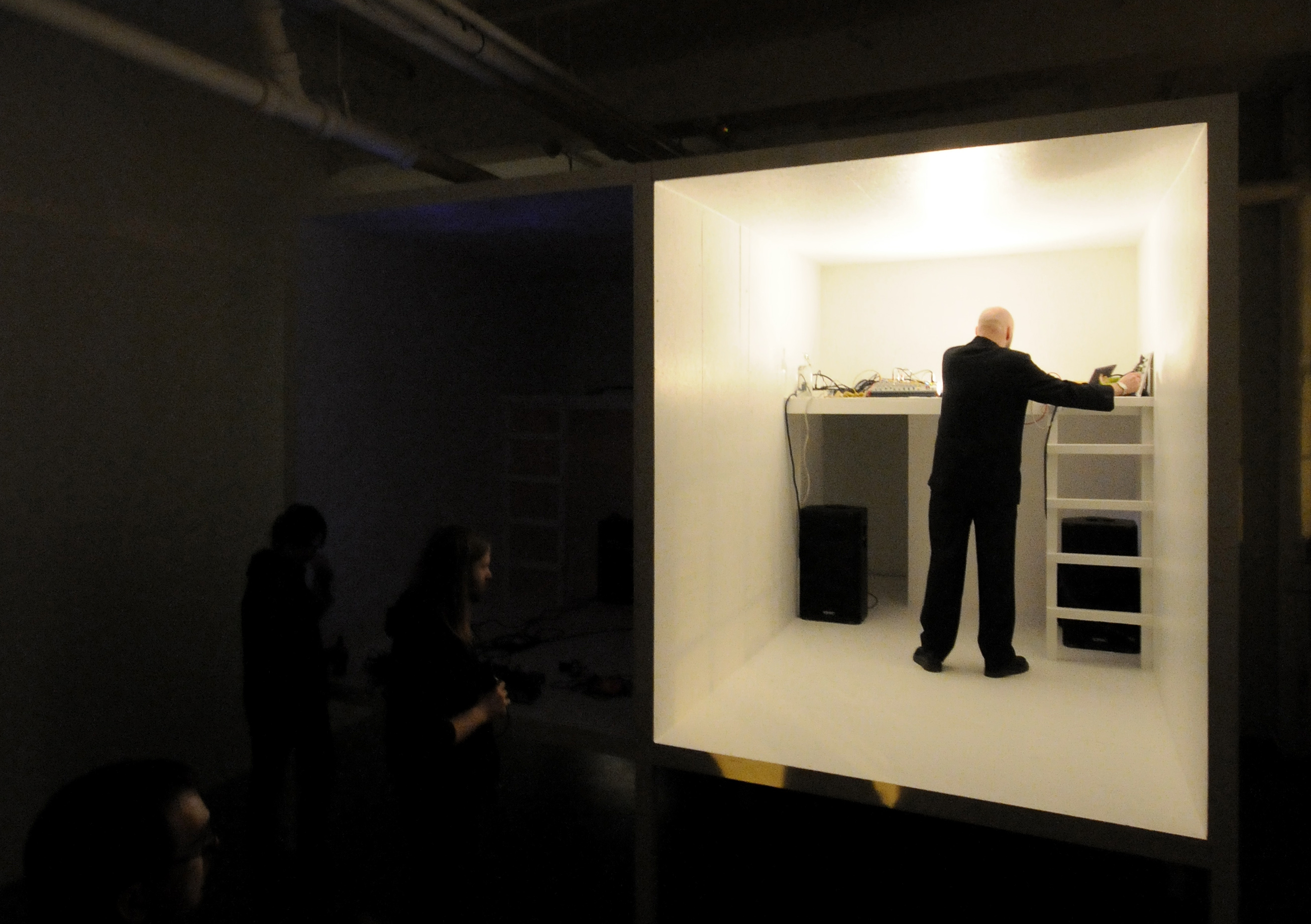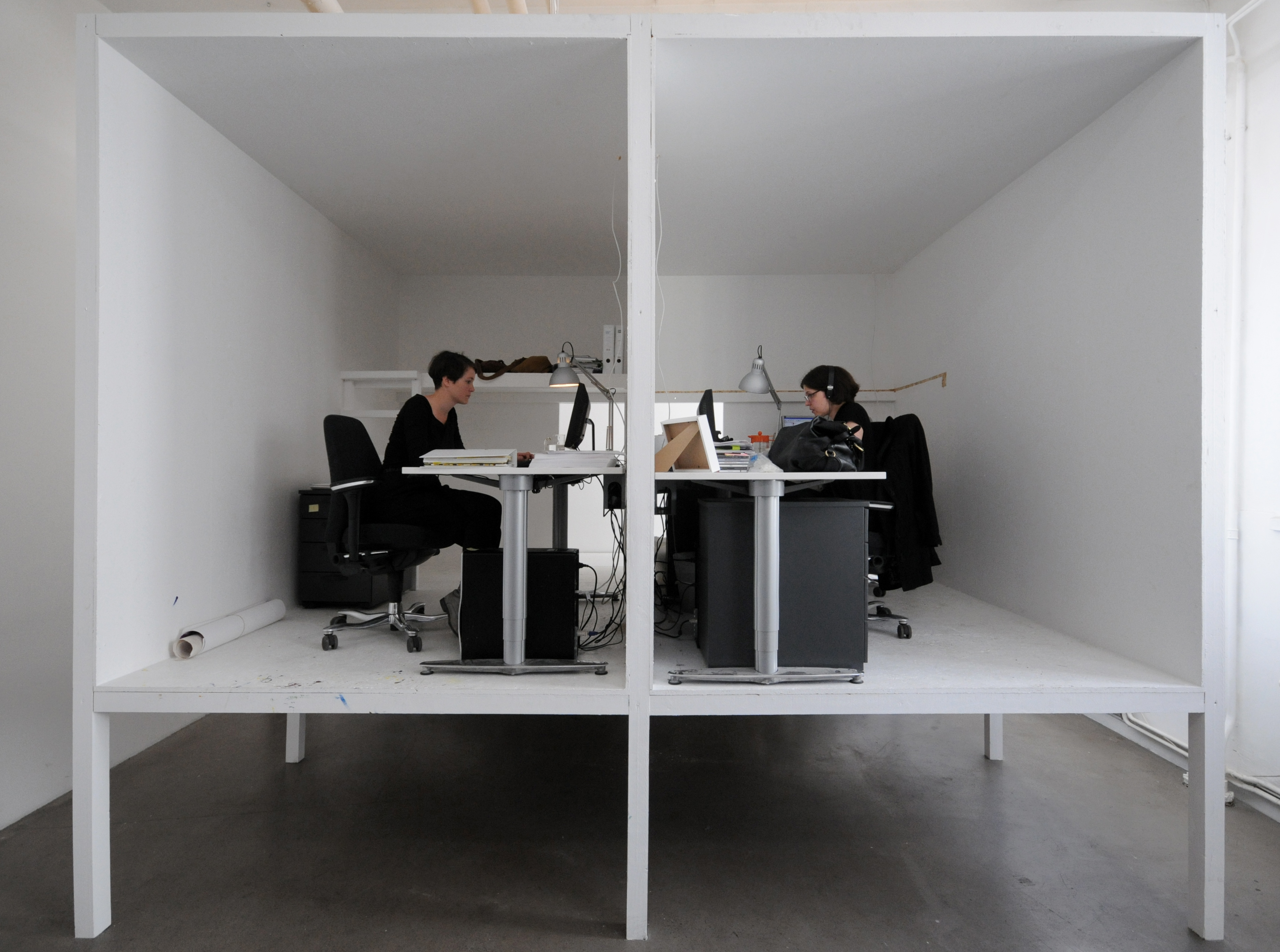In recent decades reflections on how presentation and mediation confer meaning to artistic practices have evolved beyond the limits of historical and theoretical realms. Increasingly, practitioners have become preoccupied with the consideration of presentation forms. Artists have injected administration, mediation, and interpretation facets into the scope of their practice. Presentation forms have expanded to include lectures, film screenings, and interventions. Exhibition sites have been transformed into spaces of production and inhabitation. Understanding exhibition space as a medium in its own right, Space Station challenges models of presentation, mediation and archiving, and promotes the perception of architecture as an active device capable of probing and altering institutions and political conditions.
Space Station is centered around a series of sixty-hour long residencies that take place within nOffice’s conceived and designed Space Enabler – an installation that incorporates various functional elements and reconfigures 0047’s gallery space. During this period, artists will not only work within but also completely inhabit 0047, concentrating their time within the gallery and shifting the center of their life to the institution. Each resident will be free to occupy the gallery as they wish, and after their departure will leave behind traces of their presence – but not before hosting a moving out party.
About:
nOffice and its three partners Markus Miessen, Magnus Nilsson and Ralf Pflugfelder are an architectural practice based in Berlin and London. Situated on the crossroads of critical spatial design, architecture, urban intervention and the art world, nOffice have been accumulating expert knowledge about the conceptualisation and implementation of archives, libraries, gallery spaces, cultural centres and the typology of the ‘hub’. nOffice have been specialising in the development of heterotypologies: Their recent projects for Manifesta 8, Performa 09, ASAP, Archive Kabinett, and the longer term Hans Ulrich Obrist Archive are bastard typologies: productive spatial constructs that overlap, dissect, and conflictually flatten several usually distinct programs into one. nOffice believe that bastards are stronger than pedigrees. They are pushing the idea of the heterogeneous space, something like an ‘interior city’.
Tone Hansen is a curator, artist and writer based in Oslo. She is the acting head of art department at the Henie Onstad Art Centre, where she recently curated The Creative Act (2010), Hito Steyerl (2010) and Høvikodden Live 09: To be Heard is to be Seen (together with Lars Mørch Finborud and Lasse Marhaug, 2009). Art projects include the 2007 exhibition and publication Megamonstermuseum, and edited anthologies a.o: The New Administration of Aesthetics and What Does “Public” Mean? She produced a series of seminars a.o: Can Art Create a Public Sphere of its Own? Hansen has written texts for Walker Art Centre, the Nordic Pavilion Venice Biennale 2007, IASPIS, Derivé and many art publications as well as newspapers and institutions. She was head of the Young Artists Society in Oslo between 2002 and 2005.
The Institute for Color was formed in 2006 as a reaction to the termination of a subject area of the same name at the National Academy of the Arts in Oslo. In the educational vacuum that ensued, students and tutors proceeded with an autonomous educational program, which later evolved into a collective art project. This gave rise to exhibitions, workshops, collaborations and the production of fanzines, revolving around issues of autonomy, the role of theory in art practice and art pedagogical models and questions. The group, which now consists of Silje Hogstad, Steffen Håndlykken, Ingrid Lønningdal and Elizabeth Schei, has created a transversal production format where social processes and collective material, rather than personal signatures, is the basis for diverse projects. While the boundaries between the classroom, exhibition space and informal work processes are fluid and without hierarchical divisions, the collective approach allows realist specifications as well as open investigation of the thematic field.
Jesper Alvær (b. 1973) received his formal training as an artist in Prague, New York and Kitakyushu, Japan. Many of his projects may be characterized as long-term investigations that take into account various life worlds and the effects of cultural constructions. His projects often materialize in the form of installations, videos or undocumented interpersonal meetings. Recent exhibitions include: ‘Sight of Times’, CCA, Torun, Poland; ‘Representing The Nation’, ITCA, NG Prague, the Czech Republic; ‘Lights On’, Astrup Fearnley Museum of Modern Art, Oslo, Norway; ‘World-Ex-Position’, Open Space, Vienna, Austria; ‘Figure and Ground’, Bunkier Sztuki, Krakow, Poland; and ‘Transkultura: Akt 1’, Atrium, MG, Brno, the Czech Republic.
Can Altay was born in Ankara, Turkey in 1975. His works investigates unorthodox appropriations of the built environment. Influenced by Georges Bataille’s ideas on transgression, Michel Foucault’s ideas on power and non- normatively, and Henri Lefebvre’s conceptions of social space as well as by art history, Altay approaches his subject matter from a number of discursive directions. Among others, he has exhibited at Sala Rekalde; CCA Wattis Institute; Busan Biennale; P.S.1 Contemporary Art Centre-MoMA; Platform Garanti Contemporary Art Centre and the Walker Art Centre.








